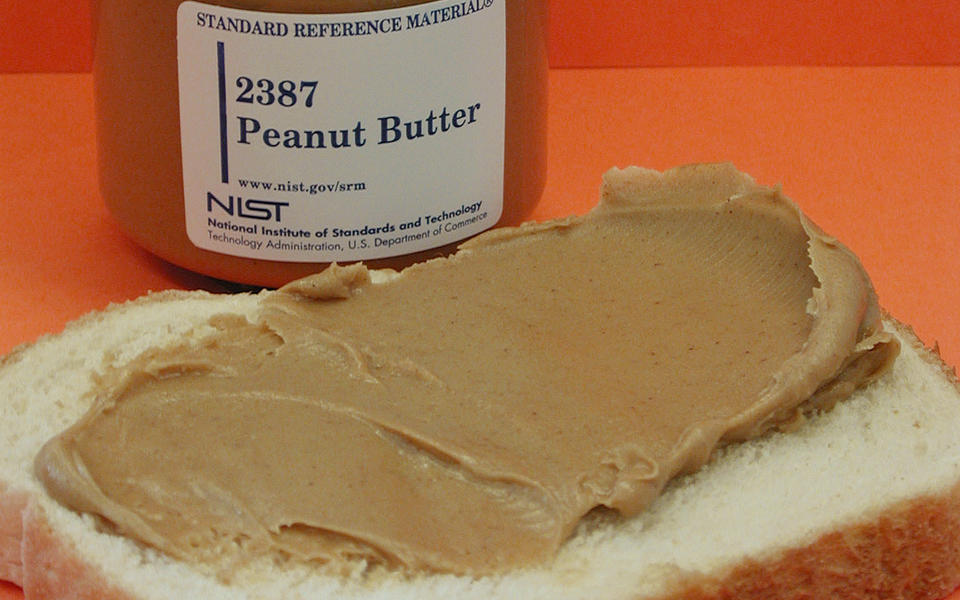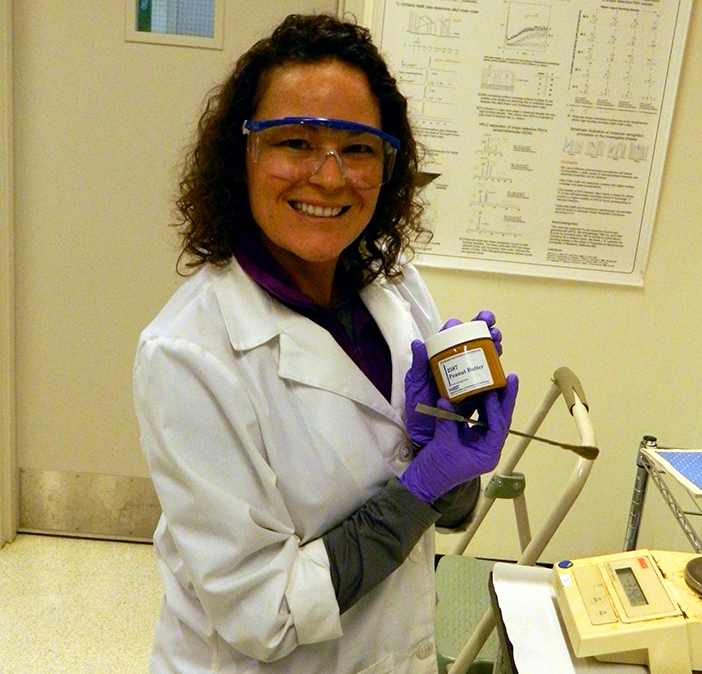Taking Measure
Just a Standard Blog

NIST SRM 2387, Peanut Butter, with white bread.
Maintaining a social media account involves keeping track of the many random celebrations that can provide an excuse to post a story that otherwise might not have a timely hook. National Peanut Butter Day (Jan. 24 for the uninitiated) is just such a day.
While NIST chemist Carolyn Burdette spent a cold morning last February testing samples of peanut butter (yes, that’s part of her job), a visitor to our Gaithersburg, Md., campus was snapping a photo of a jar of the stuff, which is on display in our lobby.
The image he posted to Twitter and imgur quickly shot around social media and stories soon appeared on sites including BoingBoing, the Food Network and Smithsonian magazine.
“I felt a mix of pride and amusement as this story quickly played out over the Internet,” says Burdette. “We know what we do is valuable for industry and ultimately the consumer, but we don’t expect to see it talked about on Reddit!”

NIST seems an unlikely source for peanut butter, but we actually sell a variety of “foods,” including spinach, low-calorie cranberry juice cocktail and something called “meat homogenate.” Although you could theoretically consume them, that’s not what they are intended for—and the grocery store probably has much tastier, and certainly less expensive, options.
NIST sells these “foods” to help make you a more informed consumer … pun intended. As you are no doubt aware, packaged foods come with a list of nutritional values mandated by the Nutrition Labeling and Education Act of 1990, which is enforced by the Food and Drug Administration.
You may be less aware of where those numbers come from. Well, manufacturers don’t just make them up. They have to do tests. NIST develops food and beverage-related standard reference materials (SRMs) to help them know that those tests are giving them the right answers.
Food manufacturers use the SRMs to calibrate their test methods and equipment. If their tests of our SRMs do not give them the answers that we say they should, they know that something has gone wrong with their tests and they have some adjustments to make. Once their results agree with ours, they know that their tests are properly calibrated and they can then accurately label their products with nutritional information and consumers can know that they are getting a balanced diet (or not, no judgment). When a company buys an SRM from NIST, they are really buying all of the measurements and scientific expertise that went into determining its chemical or physical properties, as well as NIST’s level of certainty regarding those measurements. After all, knowing how good your measurement is is as important as knowing the measurement itself, which is why NIST works constantly to improve measurement science.
NIST sells some 1,300 SRMs that help a variety of industries make sure they are meeting regulations or industry standards that help ensure the safety and consistency of their products, among other characteristics.
But the food and beverage SRMs can present unique challenges, in particular to NIST staff. Said one anonymous researcher, “I remember the trouble I had with the baking chocolate SRM. Never before during my sample prep had I wanted to 'catch the drip' on the lip of the beaker with my finger and eat it.”
Our researchers may not get to taste test the SRMs, but they help ensure that you are getting what you expect from the foods you buy, which is pretty sweet.
About the author
Related Posts
Comments
- Reply
Hello Robert,
This peanut butter is very carefully mixed and measured using complex instruments over a series of months or years, in order to provide a reference to factories when their machines become uncalibrated. It is also used to detect any irregularities in the ingredients. Hope this helps!
Compare these to gauge blocks used in machine shops to calibrate manual lathes.
I appreciate the link to other food and beverage related SRMs. It has me wondering if we could organize a cooking contest. Make any dish you like, so long as composed solely of SRMs.





